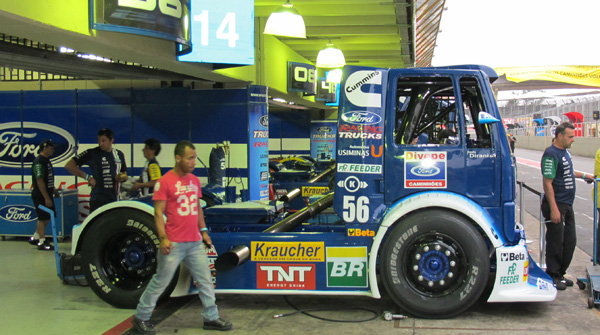
When I was invited to attend a Formula Truck race in Brazil by friction material manufacturer FRAS-LE, I was not expecting much from these behemoths that can weight more than four tons. Boy, I was in for a surprise. This series is one of the hidden jewels of motorsports.
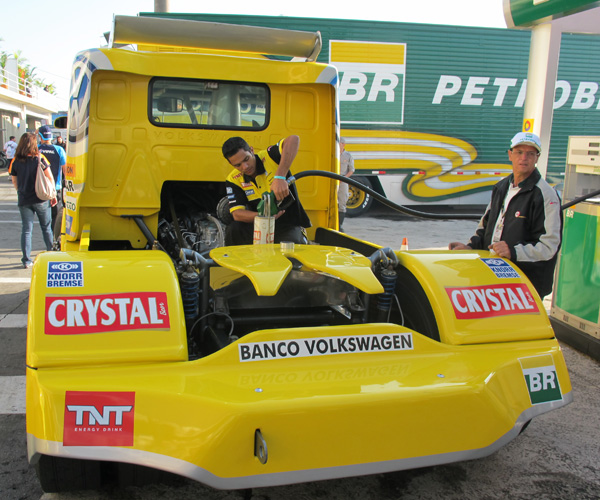
When I had my first chance to walk around the pits, I was struck by the size of the trucks, based on Class 6 trucks that appear to have been lowered by about three feet. The frames of the truck are same, but the engines, suspensions and bodies are open for modifications.
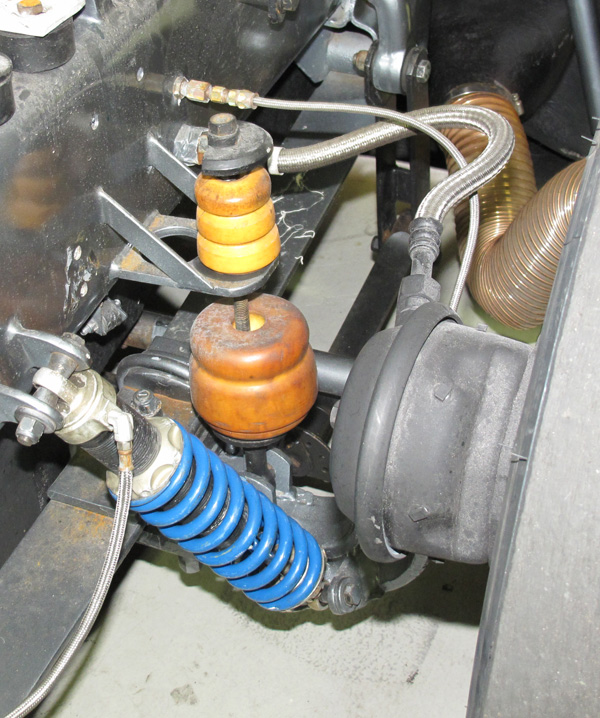
What also caught my attention was the simplicity of the suspensions. All the trucks run live-axles front and rear with leaf springs. Many teams had sophisticated auxiliary spring and shock setups to reduce body roll and axle tramp.
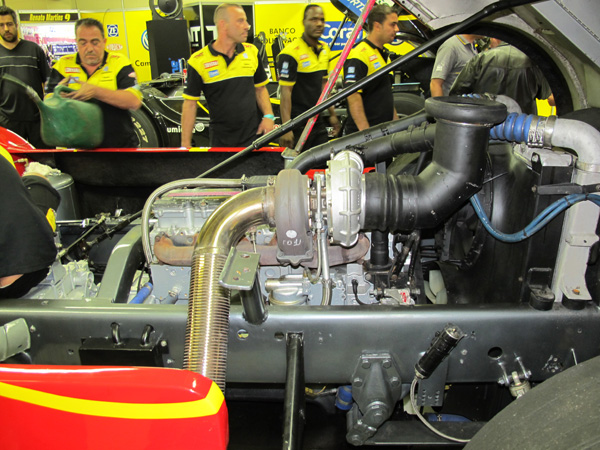
The trucks use either 9- or 12-liter turbocharged diesel engines and transmissions that are very similar to stock units. Trucks running the smaller engine can reduce their overall weight and ultimately improve handling. What is really astonishing was the lack of diesel smoke you might associate with a heavy-duty diesel engines. One mechanic told me these diesel engines makes the most power when it is not belching a cloud of black smoke or raw fuel out the exhaust pipe.
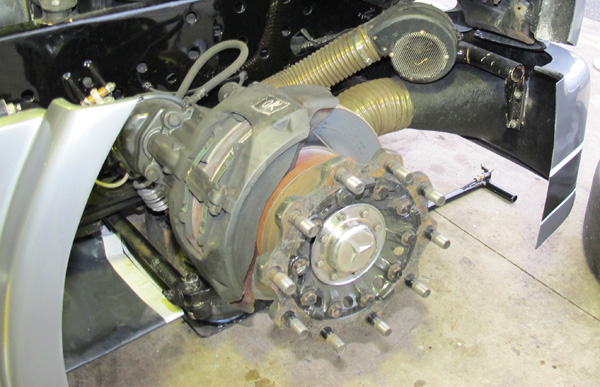
All the trucks use huge air disc brakes on all the wheels. The brake systems have to stop a lot of weight and the brakes can generate vast amounts of heat. Some teams even cool the brakes with water. Even with super thick pads, the trucks wear down a set in one race. This is a vast improvement, according to FRAS-LE, who said that before, it was common for some teams to change the pads mid-way through a race.
Even with enormous braking capacity, braking power is still one of the greatest deciding factors in a race. At the race in Brazil, one of the most spectacular racing accidents of all time (cars or trucks) was blamed on brake failure.
You may have seen the crash on the national news, sports channel or the internet.
The crash happened at the end of the front straight when the truck of Bruno Junqueira struck and vaulted over the truck of Diumar Bueno. Bueno’s truck was decapitated and ran over by the other truck. Amazingly, both drivers were not injured.
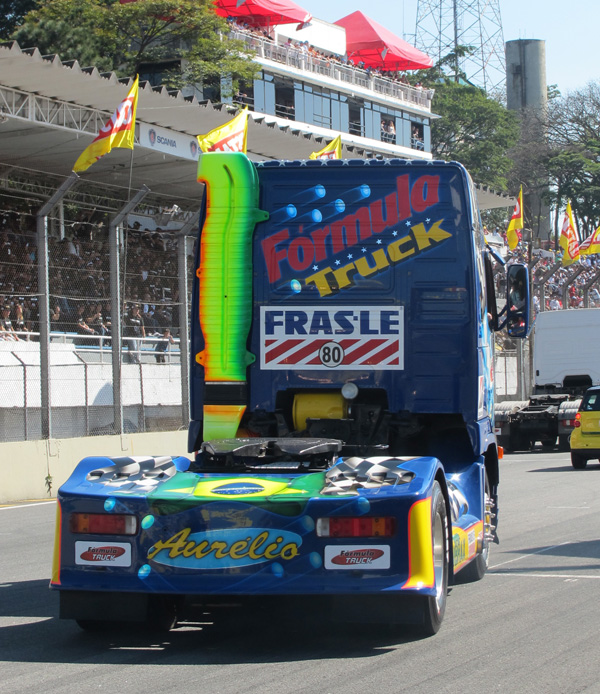
What really struck me was the “show” that was put on before the race. In the morning, fans could take rides around the track in trucks. This was followed by an exhibition of truck driving skill by the son and daughter of the series founder. In road-legal Class 7/8 trucks, they drift and spin around the circuit, giving a show that puts most professional car drifters to shame.
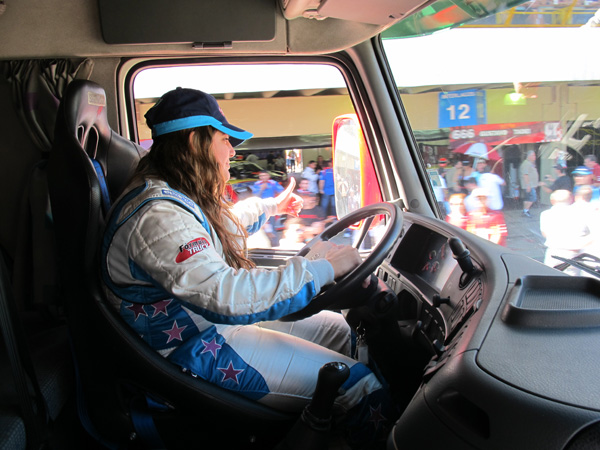
I had a chance to ride with Danielle Navarro as she put on a show for the fans. If you have never seen a heavy-duty truck doing donuts and opposite-lock drifts, you haven’t lived.
The race itself was great with drivers neck and neck at the finish. We have to get this form of racing in the US. It really lifted me out of my August racing doldrums. For more information on Formula Truck, go to www.formulatruck.com.br.








